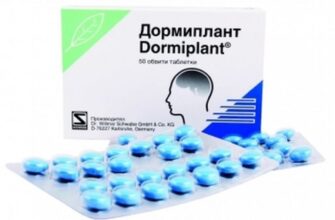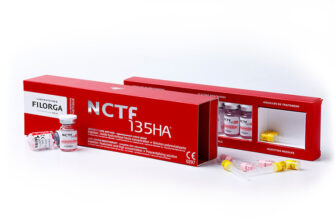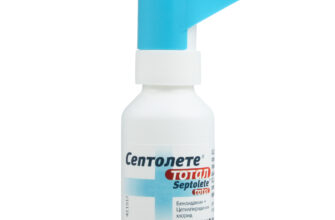Review of the best according to the editorial board. On the selection criteria. This material is subjective and does not constitute advertising and does not serve as a purchase guide. Before buying, you need to consult with a specialist.
In the article on sleeping pills, we talked about how to deal with insomnia in order to rest comfortably and fully. Surprisingly, in the Russian Federation, the treatment of insomnia is delivered at a much better level, close to the world level, than the opposite situation. Drugs to combat drowsiness, activating agents, psychostimulants, which are freely sold in Western countries, are not available in our state, since they are included in the list of narcotic substances and their precursors. Therefore, you have to be cunning and do with the 'old-fashioned' ways.
If in the article about the treatment of insomnia it was possible to talk about groups of drugs, about a wide choice for the attending physician, both prescription and non-prescription drugs, then in the treatment of drowsiness, the possibilities of domestic medicine are much more scarce. However, first things first. First, let's talk about why excessive drowsiness can occur, what forms of it occur and what they are called, how it should be correctly diagnosed.
Indeed, quite often the patient needs to take completely different medications that will help him, and not at all remedies for drowsiness. For example, insufficient thyroid function causes hypothyroidism, a characteristic symptom of which is constant daytime sleepiness and lethargy. Such a patient does not need to treat drowsiness with psychostimulants. It is enough to normalize its hormonal background, and when the concentration of thyroid hormones reaches the desired values, then such pathological drowsiness will pass by itself. In the same way, it can happen in other situations, therefore, even a person without medical education, it is advisable to know about the causes of excessive sleepiness in order to contact an experienced specialist in a timely manner. How does modern science define excessive sleepiness?
- What is hypersomnia and what are its causes
- Causes of hypersomnia
- Narcolepsy
- Kleine-Levin syndrome
- Idiopathic hypersomnia
- Group of secondary hypersomnia
- Sleepiness from medications
- Sleepiness in mental disorders
- Insufficient sleep syndrome
- Diagnostic methods
- Sleepiness treatment
- Best remedies for sleepiness
- Adaptogens
- Domestic psychostimulants
- Caffeine
- Advantages and disadvantages
- Sydnocarb
- Advantages and disadvantages
- Venlafaxine (Velaxin, Velafax, Venlaxor, venlafaxine-organic)
- Advantages and disadvantages
- FDA Approved Medicines (USA)
- Sodium oxybutyrate (Xyrem)
- Modafinil (Provigil)
- Solriamphetol (Sunosi) and Pitolizant (Wakix)
- Levothyroxine (Synthroid)
- Melatonin (Melaxen)
- Instead of a conclusion
What is hypersomnia and what are its causes
Excessive sleepiness at a time when full wakefulness and activity is naturally assumed is called hypersomnia (remember, insomnia is called insomnia).
At the same time, increased daytime sleepiness is a condition when a person cannot be active for most of the day.
The second criterion for daytime sleepiness is when a person falls asleep during the day against their own will, and for three months there is at least one such episode, and then the state is repeated. In other words, during the year there should be at least 4 episodes of accidental falling asleep during the day, which could be said to be a prolonged hypersomnic disorder.
In the international classification of sleep disorders, the following diseases and conditions are referred to excessive pathological sleepiness: narcolepsy, Kleine-Lewin syndrome, idiopathic hypersomnia, and a whole group of secondary conditions. Let's talk about them in more detail.
Causes of hypersomnia
Pathological drowsiness does not always occur. It can also be found in healthy individuals, if a person has not slept for a long time, if he is experiencing anxiety or nervous stress, and are also under the influence of large doses of coffee. But there are also special, painful conditions. These are narcolepsy, Levin's syndrome and idiopathic hypersomnia. In this case, no external causes that could affect drowsiness are found, these are actually primary sleep disorders. Let's get acquainted with them in more detail.
Narcolepsy
Narcolepsy is the most famous of these diseases. Narcolepsy has several classic characteristics. Patients have pronounced daytime sleepiness, the desire to sleep can be so overwhelming that it is called imperative, or imperative, and the patient periodically falls into daytime sleep, which he cannot control.
There is a significant decrease in muscle tone, or complete muscle flaccidity, called cataplexy. Quite often, daytime attacks of such cataplexy, or muscle lethargy, occur, and during falling asleep and awakening, the patient may see vivid visual visions or images that are in the nature of hallucinations. During awakening and falling asleep, the patient also has a sharp decrease in muscle tone, and night sleep in such people is significantly impaired.
The main symptom that greatly impairs the quality of life, and even leads to disability, is an irresistible need to sleep during the day, and frequent episodes of falling asleep. The patient can sleep from 2-3 minutes, and up to several hours. After such awakening, the patient is easier, and he is more active than before, but not for long: then the sleepiness increases again.
It is characteristic that such attacks occur when a person does not need to actively participate in some process. This is a trip on public transport, going to the cinema, reading. Attempting to do gymnastics, showering, or jogging can suppress the urge to sleep, but sometimes the attacks of sleepiness are very intense and sudden, such as while eating or even walking.
At the same time, patients have significant problems at night. Yes, they fall asleep quickly and well, but after that they sleep for short periods of time, often wake up, with repeated falling asleep difficulties already arise, at night the sleep is not calm, with high motor activity. At the same time, teeth grinding (bruxism), restless legs syndrome and other pathological phenomena may be expressed in patients during sleep. It remains to add that such people quite often have overweight, chronic anxiety or depression, there are episodes of panic attacks and pathological fatigue.
Kleine-Levin syndrome
This is a very rare disease, also called hibernation syndrome. At the same time, drowsiness is very severe, constant and lasts a long time, on average, 10-15 days. There are also severe cases when hibernation lasts for several weeks or even months. These periods of sleepiness tend to recur, with the patient sleeping up to 20 hours a day and getting up only to eat and go to the toilet. Therefore, do not confuse this disease with lethargic sleep. Being in lethargic sleep, people do not wake up at all, do not go to the toilet, their metabolism is slowed down, and they can resemble a dead person for long days and weeks. A patient with Kleine-Levin's disorder must still spend at least a few hours in an active state every day in order to eat and go to the toilet, which means that his metabolism and metabolism remain at a normal level.
If during the hibernation period a person wakes up, then he remains lethargic, sleepy and apathetic. During such a period of sleep, the patient does not remember what happened to him the day before, does not perceive the world around him well, can be gluttonous, hypersexual and anxious. During such an attack, a person drops out of social life and his profession for many days, spending these days in bed. At the same time, there are no physical changes in the work of internal organs and deviations in the analyzes. Between these bouts of hibernation, a person leads a completely normal life.
It should be recalled that this is an extremely rare disease, and among the 140 million people inhabiting Russia, there are hardly 50-60 people with such a diagnosis, since the frequency of occurrence is on average 1 per 1,000,000 cases, excluding infants and the elderly. Over time, episodes of pathological sleepiness occur less and less, and on average, 15 years after the first attack, a person becomes normal. In men, with an early onset of pathological drowsiness at the age of less than 12 years, the disease lasts a little longer.
Idiopathic hypersomnia
This is a disease in which there are not a large number of symptoms, and daytime sleepiness exists randomly and chaotically, there is no cataplexy, or a decrease in muscle tone in these patients, they also have no periods of hibernation. The duration of night sleep is normal for them, there is no night insomnia.
Such persons have the phenomenon of difficulty waking up, and sometimes the so-called drowsiness, or sleep inertia, develops. When trying to wake up such patients, they become irritable, confused, their behavior may be automatic. This sleepy inertia can last for about an hour. When they wake up, they note that they are still in a broken state, and the previous dream did not bring them relief. Such patients quite often have disorders of the autonomic nervous system, headache, vascular disorders.
Most often, women are ill, the disease begins at the middle age – 18 years, and idiopathic hypersomnia most often occurs in the form of family cases. The complications of this disease include social consequences. This is the possibility of losing a job, a drop in performance, a decline in social status, and so on. However, the social consequences are dangerous for all primary hypersomnias.
Group of secondary hypersomnia
Secondary hypersomnias differ from the primary ones in that the centers of sleep and wakefulness located in the brain do not suffer, and the cause of pathological drowsiness is another somatic disease, for example, the same hypothyroidism or myxedema. The symptoms are the same: daytime sleepiness, daytime falling asleep, prolonged sleep at night, and other symptoms. The main task of the doctor is to find out the reason that caused the excessive sleepiness. Most often it is a disease of the central nervous system. Metabolic encephalopathy, chronic poisoning, consequences of encephalitis, brain tumors, sarcoidosis. The appearance of drowsiness is especially characteristic for masses that affect the hypothalamic region. Excessive daytime sleepiness occurs both in Parkinson's disease and in various genetic hereditary diseases. Let's consider some of the most common secondary hypersomnias.
Sleepiness from medications
This is the most common group. Many drugs have a concomitant sedative effect, and most often they are hypnotics that are poorly selected and continue to work during the day. These are both benzodiazepines and barbiturates. It is possible to develop drowsiness when taking anticonvulsant drugs for the treatment of epilepsy, antiallergic drugs, especially rough ones, belonging to the first generation. These are Suprastin, Tavegil, Diazolin, Diphenhydramine. Drowsiness also occurs when taking non-steroidal anti-inflammatory drugs, some antiarrhythmic drugs, and beta-blockers. Very often, daytime sleepiness occurs in elderly patients who are taking a large number of different medicines for heart disease at once. In some cases, drowsiness from medication can be caused by taking anticholinergic drugs and some antidepressants.
Sleepiness in mental disorders
If a person is registered with a psychiatrist, then daytime sleepiness may also be expressed. It can be caused by severe depression, bipolar disorder, formerly called manic-depressive disorder. Approximately one in 20 patients with persistent daytime sleepiness is caused by some kind of mental illness. Such patients have a long time to fall asleep, they often wake up, and within sleep they have a waking phase, and although the patient is in bed longer than necessary, the effectiveness of such sleep is reduced.
Insufficient sleep syndrome
Finally, the syndrome of insufficient sleep also belongs to secondary hypersomnia. It arises if this sleep is artificially limited, and sleep less than the body needs. A persistent conflict arises between the body's need for rest and the actual duration of sleep. Patients quite often do not realize that their long hours of work and short sleep time can cause severe daytime sleepiness. But the syndrome is not limited to such drowsiness. Malaise and anxiety, lack of vital energy and decreased motivation appear, low activity and inattention appear. Such patients are irritable. To fight the syndrome of insufficient sleep, naturally, you need to change the regime, and all symptoms will regress if the duration of sleep is increased at least to 7 hours a day for a long time. Naturally, adolescents, young adults and students are most likely to suffer from insufficient sleep syndrome.
Diagnostic methods
If you think that it is enough to complain about daytime sleepiness, and the diagnosis is already clear, then this is not at all the case. First, at an appointment with a somnologist, or a specialist in sleep disorders, you need to talk about your complaints and answer the questions of special questionnaires. There are special international scales of sleepiness, for example, Stanford and Carolina, these research methods are subjective, since the patient himself can influence their accuracy.
Then the sleep disorder must necessarily be objectified using other instrumental methods. This is a multiple sleep latency test, polysomnography and other methods. For example, a sleep latency test examines a person's ability to fall asleep in a normal, calm environment. First, polysomnography is performed, it proves that the patient had a normal period of previous night sleep of at least 7 hours before the study. Then a test is performed, which for an adult and healthy person usually exceeds 10 minutes. That is, lying during the day in a calm, relaxed atmosphere, a person who has set a goal to fall asleep will not fall asleep earlier than 10 minutes later. But in a patient with hypersomnia, or with drowsiness, this time is much shorter, and diagnostic importance occurs when the duration is less than 8 minutes. There are other instrumental methods of research that must be passed to confirm or refute the diagnosis of hypersomnia.
Sleepiness treatment
First, we will consider those drugs that can be easily bought in any Russian pharmacy without a prescription, and which will somewhat activate patients and increase their vitality. This is a group of adaptogens. After that, we will consider those drugs that can also be bought in pharmacies without a prescription, but these will no longer be adaptogens, but synthetic drugs, for example, the safest and most effective caffeine. Finally, the last group will include all the most highly effective pills that are used abroad, and are sometimes used not only to treat various forms of drowsiness, but also to increase intellectual potential.
These drugs are sometimes used by students and even scientists to carry out critical work, these drugs increase vigor and stimulate the central nervous system. It is with this that they have caused the concern of the relevant 'authorities'.
The International Nonproprietary Name, or INN, will be indicated for each drug, if possible. If there is an original representative that was developed and introduced into clinical practice first, then its name will be given immediately after the INN. Where generics, or commercial copies, are available, the most prominent ones will also be listed and a price range given for some drugs. The price is relevant for pharmacies of all forms of ownership in the territory of the Russian Federation for October 2019.
Best remedies for sleepiness
| Nomination | a place | Name of product | price |
| Domestic psychostimulants | 1 | Caffeine | RUB 48 |
| 2 | Sydnocarb | 730 RUB | |
| 3 | Venlafaxine (Velaxin, Velafax, Venlaxor, venlafaxine-organic) | 217 r | |
| FDA Approved Medicines (USA) | 1 | Sodium oxybutyrate (Xyrem) | RUB 1 109 |
| 2 | Modafinil (Provigil) | RUB 3,500 | |
| 3 | Solriamphetol (Sunosi) and Pitolizant (Wakix) | RUB 3,500 | |
| 4 | Levothyroxine (Synthroid ) | 83 rbl. | |
| 5 | Melatonin (Melaxen) | 370 RUB |
Adaptogens
The drug fight against drowsiness begins with adaptogens. Adaptogens are tonic herbal medicines that increase metabolism and the body's adaptation to changing environmental conditions, which is why they are called so. There are many of them. These are Chinese lemongrass, ginseng, rhodiola rosea, leuzea, aralia, even a decoction and tincture of rose hips and echinacea.
All of these drugs are usually sold in liquid form, as extracts and tinctures, and are inexpensive. The mechanism of their influence on the body is not completely clear, but their effects are well known. The tone of the body gradually increases, and its vital activity also increases. The metabolism is activated, and the vegetative and endocrine functions are also activated.
How is this general tonic effect manifested? The patient has increased secretion of the glands of the gastrointestinal tract, increased appetite, increased work of the heart, slightly increased pressure. In addition to such a general manifestation on organs, there is also a slight psychostimulation. Of course, its level is not as high as in foreign drugs, for example, those related to amphetamine derivatives. But still, in mild cases, such psychostimulation allows you to fight well against drowsiness. The patient's performance increases, both physical and mental. Fatigue decreases, the manifestation of asthenic syndrome decreases.
It is very important to emphasize that such a psychostimulating and general tonic effect is very mild, and can be considered as being within the physiological norm. Adaptogens do not have any addiction, no excessive excitement, and, moreover, euphoria. A very important side effect, but a beneficial effect can be considered an increase in immunity, low toxicity, good tolerance, and the absence of significant side effects.
In addition to plant raw materials, we should also mention pantocrine, which is obtained from young antlers of marals (Altai deer). Adaptogens also include propolis, mumiyo, various vitamin complexes that contain their additives, for example, Doppelherz-ginseng, Bittner's herbal elixir, Chinese balm 'Golden Dragon'. Various bath salts containing adaptogens and pine extract are available. It makes no sense to list in detail the advantages and disadvantages of individual representatives, you should have general concepts about genes, since they are all sold without a prescription, and they can be used as first-line drugs in the fight against excessive sleepiness.
Domestic psychostimulants
Why is this section called 'domestic' psychostimulants? Because imported psychostimulants are prohibited. Unfortunately for them, many drugs are amphetamines. But their inclusion in such lists, limiting their circulation, is a very short-sighted and stupid measure. In the country, drug addiction has gradually begun to fall in price, chemical and salt substitutes have appeared, the number of drug addicts is not decreasing, and the capital's 'elite' indulge in pure cocaine. In this light, expensive drugs are deprived of the opportunity to help patients, and drug addiction continues to flourish.
The psychostimulants that we sold not so long ago are much weaker than amphetamines, for example, this is Mezocarb, or Sydnocarb. This drug could already be prescribed by prescription by domestic specialists, but unfortunately, its registration ended, but they did not renew it, which is again a deliberate policy leading to the destruction of healthcare. Finally, of the psychostimulants, only the methylxanthine derivative, or ordinary caffeine, remains for Russians. It is sold in solution and in tablets, and very well helps with ordinary, not severe attacks of drowsiness and loss of strength. There are also drugs of other pharmacological groups that do not belong to adaptogens, but we will not consider here.
Consider just Sydnocarb and caffeine. Domestic experts in the fight against insomnia also use other drugs, for example duloxetine and venlafaxine from the group of antidepressants – selective serotonin reuptake inhibitors. This is inconvenient because venlafaxine has a short-acting effect and long-term release is more appropriate in the fight against drowsiness. Another antidepressant, Fluoxetine, can also be used, the use of which is justified in the presence of a depressive or anxiety state against the background of narcolepsy.
It is important to remember that abrupt withdrawal of these drugs can increase the decrease in muscle tone, or cataplexy, up to a serious condition called cataplexic status. Of all the drugs, caffeine alone can be safely purchased at the pharmacy without any prescription. His action, though very weak, we will start with him.
Caffeine
Popularity rating: 4.9
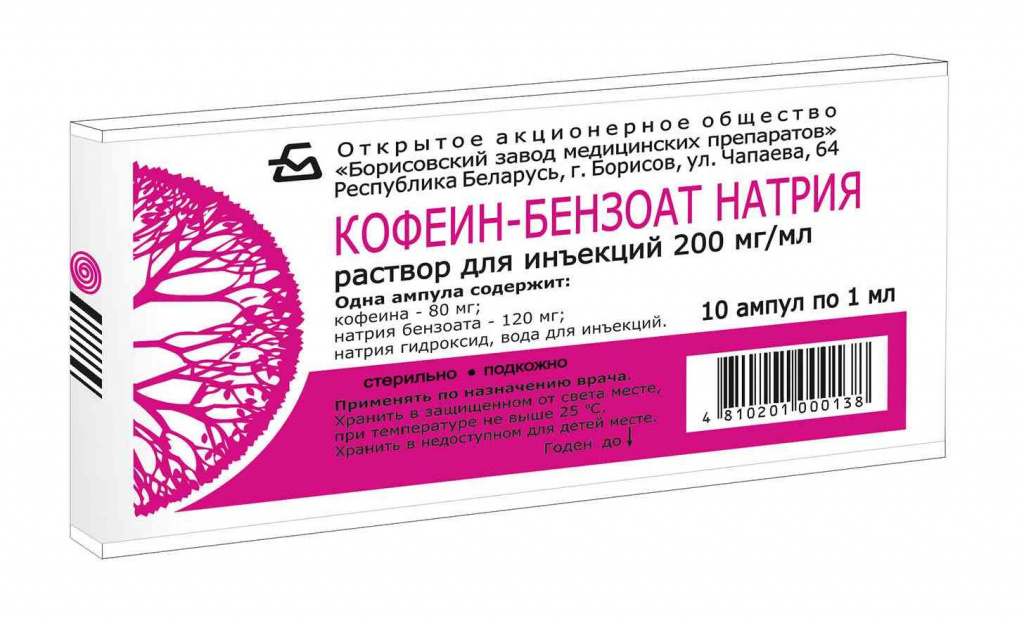
The invigorating effects of caffeine are familiar to everyone. This alkaloid is found in tea leaves, coffee seeds and cola nuts, from which real Coca Cola is made. It excites the central nervous system, increases efficiency, reduces the waiting time for a reaction. For a while, drowsiness is also eliminated and reduced after taking caffeine. It increases the strength of the heart, increases blood pressure, and causes increased urine output. More urine is produced after a strong cup of coffee.
In small doses, caffeine has a stimulating effect, but large doses – on the contrary, it depresses, and is able to provoke drowsiness. It affects the body of the elderly more than that of young people. For drowsiness, it is used at a dosage of 100 mg in the morning and 100 mg, the same dose, at lunchtime. It cannot be prescribed in large doses, more than 3 tablets, that is, 300 mg per day. This is the equivalent of 4 large cups of fairly strong coffee.
Tableted caffeine (caffeine sodium benzoate) is very inexpensive, but it also contains only a few tablets per pack. A pack of 10 tablets of 100 mg of caffeine will cost from 40 to 70 rubles, this is a domestic production – Tatkhimpharmpreparaty. There is a dosage and twice as much, 200 mg No. 10, and the cost of this package is also about 60 rubles. It is produced by the Borschagovskiy Chemical Pharmaceutical Plant in Ukraine.
Advantages and disadvantages
The great thing about caffeine is that it is a natural, fast-acting drug with no side effects, as long as the dose is not increased. If the dose is high, then there will be pathological excitement, getting rid of drowsiness will turn into insomnia, there will be tachycardia, increased blood pressure and other unpleasant effects. You can not take caffeine in conditions of high pressure, against the background of glaucoma, as well as heart rhythm disturbances. The undoubted advantage is the mild effect, low cost, and for lovers who cannot stand coffee, a caffeine pill can completely replace the feeling of their favorite drink. There is also an indisputable advantage. If you want vigor and clarity of thinking, for example, during an exam, you can simply buy it without a prescription for free.
Sydnocarb
Popularity rating: 4.8

Sydnocarb and its analogue, Mesocarb, is a much stronger psychostimulant; it stands approximately halfway in activity between caffeine and amphetamine derivatives banned in Russia. Sidnocarb is shown for use, in addition to drowsiness, with lethargy, decreased performance, lethargy and with asthenoneurotic syndrome. It helps in the treatment of various serious illnesses, intoxications and infections in the convalescent stage. It is also used in the complex treatment of alcoholism and withdrawal symptoms, with mental retardation in children, in the case of organic diseases of the central nervous system. The drug is taken once or twice a day, except in the evening, that is, in the morning and before lunch, before meals. The usual dosage is 25 mg per day, the initial dose is 5 mg.
Advantages and disadvantages
It is important to remember that the stimulating effect of this medicine develops gradually, and not immediately. This is good because there is no dramatic activating and exhilarating effect to begin with. The drug has no euphoria, no motor excitement, no tachycardia and increased pressure, that is, the side effects inherent in caffeine. Sydnokarb doesn't have them. If you cancel it, then general weakness and drowsiness does not return, the appearance of addiction is much less pronounced. However, the patient may develop side effects such as decreased appetite, insomnia, anxiety, and incontinence.
Perhaps the most important unpleasant effect is its long absence in the pharmacies of the Russian Federation, and almost everywhere. There is evidence that Sidnokarb has lost the registration certificate, and now it is not for sale in Russia. This is a very unpleasant fact, which suggests that the domestic health authorities are not interested in the needs of patients. Therefore, this drug is described here only because it is possible to purchase it abroad, if there are indications.
Venlafaxine (Velaxin, Velafax, Venlaxor, venlafaxine-organic)
Popularity rating: 4.7
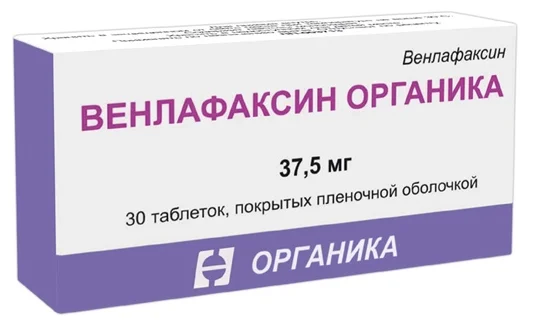
Velaxin is a modern drug from the group of selective serotonin reuptake inhibitors, an antidepressant. In addition to drowsiness, it is indicated for depression, for anxiety disorders. It is necessary to use the drug once a day at a dose of 75 mg, this may well be enough to activate the patient, or you can double the dose, always taking into account contraindications. The maximum daily dose of venlafaxine is 350 mg.
The cheapest domestic venlafaxine is produced by Organic company – it can be purchased starting at a price of 280 rubles. per pack of 30 tablets of 75 mg. Recall that a pack of 28 Velaxin tablets, which is produced in Hungary by Egis, will cost from 950 rubles. If we talk about prolonged-release capsules, with slow release, which provide a longer and more comfortable fight against drowsiness, then they will already cost more. Their price is from 1100 rubles. up to RUB 1,500 for the same packaging.
Advantages and disadvantages
The medicine is contraindicated in persons with severe disorders of the liver and kidneys, pregnant and lactating women, as well as those under the age of 18. It should be carefully prescribed to people with high blood pressure, including intraocular pressure, and with glaucoma, with low body weight and heart failure. Side effects of the remedy include weakness, insomnia and agitation, decreased blood pressure, decreased platelet levels in the blood, sweating, erectile dysfunction, and impaired ejaculation in men.
FDA Approved Medicines (USA)
Such drugs cannot be purchased in Russia, and you may face a criminal sentence even if you try to import them into the country. They may contain derivatives of amphetamines, and the same story may come out as with the sensational Frisium. However, the most well-known drug is Modafinil. In 2019, two more drugs were approved in the United States for the treatment of drowsiness and narcolepsy, here are a few words about them. But let's start with the usual sodium oxybutyrate, or gamma-hydroxybutyric acid.
Sodium oxybutyrate (Xyrem)
Popularity rating: 4.9

Sodium oxybutyrate (GHB) was very popular in surgical hospitals, in the departments of anesthesiology and intensive care in the nineties of the last century, and there were no special problems associated with its circulation. Now they have also become completely unreasonably complicated, and sodium oxybutyrate cannot be obtained either commercially or by prescription. The drug is very rare even in specialized hospitals.
It improves the duration of both REM and NREM sleep and is very helpful in narcolepsy. During the day, he copes with drowsiness, is able to eliminate sleep paralysis, fights hallucinations and reduces the manifestations of cataplexy. It acts very shortly, no more than 4 hours. Therefore, in order for the sleep to be physiological and complete during the night, you need to take it 2 times: before going to bed and in the middle of the night, specially waking up for this. The initial dose is 4.5 g every day, then it can be increased by 1.5 g every week. The maximum dosage of sodium oxybutyrate is 9 g per day. The most common side effects are weight loss and nausea, and sedation in overweight patients may cause increased nighttime snoring and sleep apnea, which may be associated with an increased risk of life.
Modafinil (Provigil)
Popularity rating: 4.8

Modafinil is widely used to combat drowsiness, although its mechanism is still not fully understood. It is believed to increase the concentration of monoamines in the structures of the central nervous system. The amount of dopamine increases in extrapyramidal formations, the concentration of norepinephrine increases in the hypothalamus, and the production of serotonin in the cortex of the frontal lobes of the brain increases. They start taking it in the morning, at a dosage of 100 mg. Then add the drug intake at noon, in the same dosage. The maximum daily dose is 400 mg.
As practice shows, the psychostimulating effect develops in 50% of all patients, and it is sufficient to combat drowsiness. However, headache sometimes develops, especially with a rapidly increasing dosage. If you increase it slowly, then this side effect does not appear. Modafinil can also raise blood pressure and increase anxiety levels, as can all drugs that successfully combat drowsiness. As mentioned above, there is no registration of this drug in our country, and is not expected.
Solriamphetol (Sunosi) and Pitolizant (Wakix)
Popularity rating: 4.7
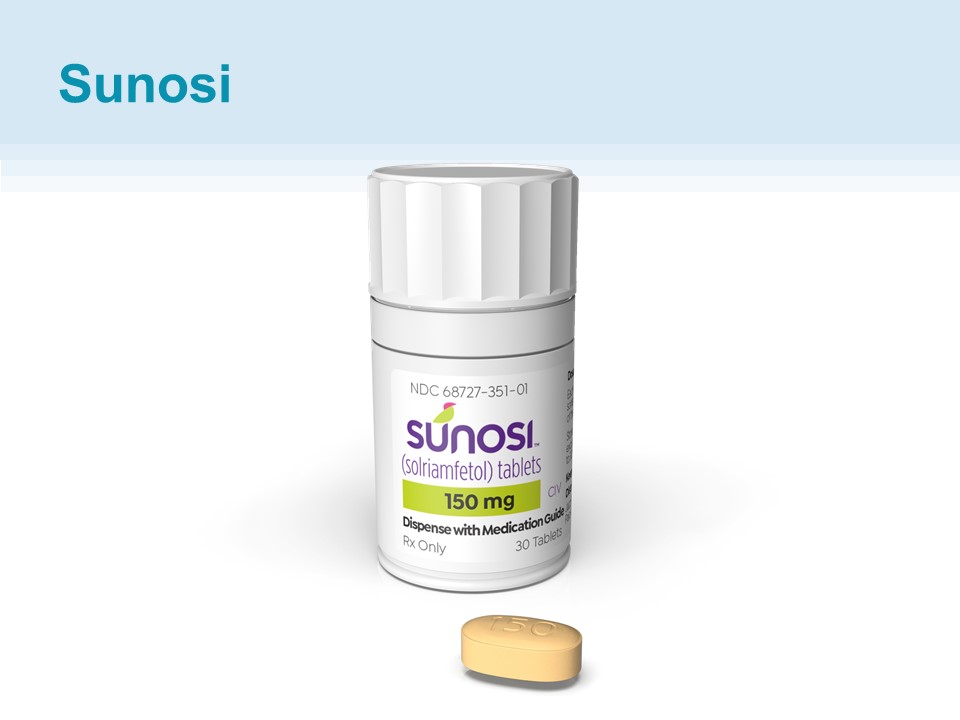
These drugs are brand new and have received FDA approval just this year. The first drug is for the treatment of drowsiness, including primary drowsiness, narcolepsy and sleep apnea syndrome. Its creation can be considered a revolutionary breakthrough, since the drug has a completely different pharmacological effect, different from psychostimulation. This is the first registered inhibitor of the reuptake of dopamine and simultaneously norepinephrine, that is, a dual-acting agent. Solriamphetol is also approved for the treatment of daytime sleepiness in adults.
The second drug, Pitolizant, can also be named. This drug is not yet available even in the US, as it was only approved by the FDA in August of this (2019) year. This drug is a type 3 histamine receptor antagonist, and its task is to increase the synthesis and release of histamine in the brain. Histamine is known to be a neurotransmitter that stimulates wakefulness and reduces sleepiness. This drug, according to studies, significantly reduced sleepiness in 30% of people with this disorder who were resistant to other drugs. Therefore, in the future, Wakix may play the role of a reserve, or second-line agent for the treatment of primary hypersomnia.
Levothyroxine (Synthroid)
Popularity rating: 4.7
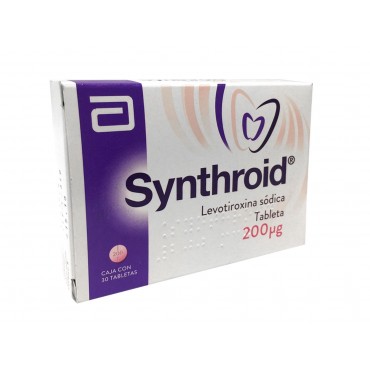
This drug is a synthetic analogue of thyroid hormone and is used in the United States to treat endocrine disorders. It is usually prescribed for people with myxedema, or hypothyroidism. But studies have shown that this drug, if used in patients with an early form of hypothyroidism, with a slight decrease in the concentration of hormones, then it relieves daytime sleepiness, and also reduces the average sleep time. It was a pleasant side effect. This drug is being modified, studied and improved, because, despite its promising uses, it carries the potential risk of increased arrhythmias and their occurrence.
Melatonin (Melaxen)
Popularity rating: 4.7
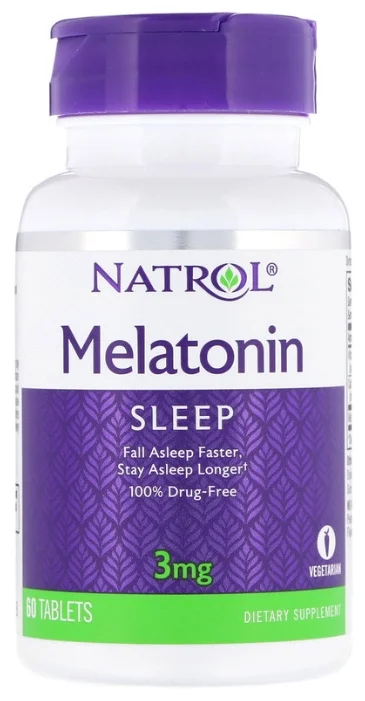
This substance, a synthetic analogue of the hormone melatonin, has already been written in other reviews when it came to combating insomnia, jetlag, that is, painful maladjustment when changing time zones. Melatonin is actively produced in the pineal gland, or pineal gland at a young age, and in the elderly, its production gradually decreases. Melaxen can be indicated for the treatment of daytime sleepiness, but only not in connection with its activating or psychostimulating effect, but with an improvement in the quality of physiological night sleep. Here we will not describe in detail the manufacturers, effects and prices of Melaxen and its analogs, we refer to the relevant articles.
Instead of a conclusion
In fact, other drugs that are intended to treat completely different diseases may also have an activating effect. So, there is the drug Selegiline, or a representative of monoamine oxidase inhibitors (MAO). It is mainly used to treat Parkinson's disease, but it also suppresses daytime sleepiness. Therefore, it can also be used for certain indications.
Interestingly, studies have shown that the common antibiotic clarithromycin also fights daytime sleepiness and improves quality of life. It is a macrolide antibiotic derived from erythromycin and has long been used to treat various infections. Its ability to combat daytime sleepiness was proven in a true, double-blind, placebo-controlled study in 2015, which was conducted by all the rules. The drug significantly reduced sleepiness and increased energy.
It should be recalled that the use of caffeine, taurine and their analogues with alcohol is strictly prohibited. All alcoholic caffeine-containing cocktails, for example, 'Yaga', 'Yagych', that is, the infamous 'Jaguar' in cans, if consumed regularly in the amount of 3-5 cans per day, leads in six months to severe, irreversible variants of alcoholic cardiomyopathy, which often ended sudden death in young men, in the midst of seemingly complete apparent health.
Of course, even in the case of primary hypersomnias, not only drug treatment is necessary, but also individual adaptation, the correct attitude to the disease and the development of adaptive behavior skills. It is very important to increase the patient's self-esteem, and inform doctors about hypersomnia. This is an important problem in sleep medicine, and so far in our country, as can be seen from the list of drugs, insufficient attention is paid to it.
The popularity rating is based on the analysis of demand data from the wordstat.yandex.ru service.
Attention! This rating is subjective and does not constitute an advertisement and does not serve as a purchase guide. Before buying, you need to consult with a specialist.



